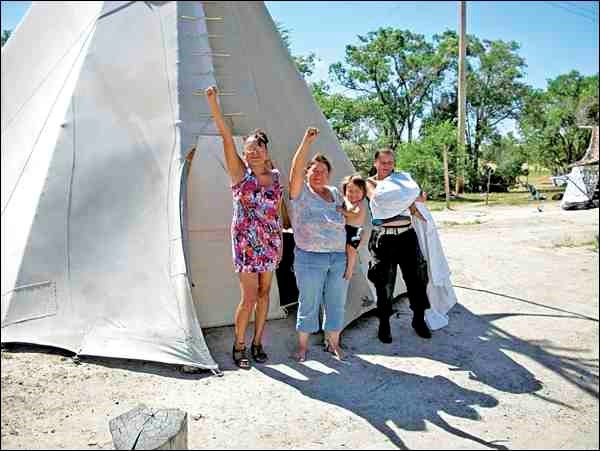Old Indians say that a journey across Mother Earth is always good for the soul and the travel heals you from your pain and worries, and that is what I thought of as I left on the highway heading south from Saskatchewan, down to the land of the Lakotas and the sacred Black Hills.
The Black Hills are the centre of the universe to Lakota People and these hills were never surrendered by treaty, they were stolen by the U.S. Government when gold was discovered there in 1874. These hills are part of the Great Sioux Reservation of the 1868 Fort Laramie Treaty signed after Lakota war chief Red Cloud militarily defeated the United States.
Indigenous People believe this world is sacred and created by long ago sacred and mysterious acts. Long ago, a race was run by the animal beings around these hills. This race was won by the humble magpie who rode on the back of the buffalo and just before the finish line the magpie had flown ahead of the buffalo to win the race. It was here that the Lakota originated, they say. As a Plains Cree, I am of Assiniboine ancestry. The Assiniboine's are part of the seven council fires of the Lakota and so these hills are part of my history as well. It was a return to the beginnings.
Bear Butte, Mato Paha, is a butte that stands by itself just west of Sturgis, S.D. just before you enter the Black Hills. This butte is sacred to over 30 indigenous nations. For the Lakota, this butte is where many of their spiritual leaders, like Crazy Horse, sought visions and strength. Our Lakota guide at the Bear Butte Visitor Centre said this butte is part of a larger story that is connected to Mato Tipila, or Devil's Tower in Wyoming 100 kilometres to the west, and the Bad Lands 150 kilometres east of this butte.
The climb to the top of this sacred site is arduous and the rocky path is lined with tobacco ties and coloured cloth offerings, evidence that this site is still important for indigenous people as a sacred shrine. The whites have sacred churches like Lourdes in France and the Vatican in Italy, this butte and others like it are our indigenous cathedrals.
The Pine Ridge Reservation, as vast as it is in comparison to Canadian reserves, is only a fraction of its original size. It is a magical and tragic place of heroes and warriors. On the reservation is the town of Wounded Knee.
Wounded Knee, site of a conflict between the Lakota and the U.S. Army, where unarmed Lakota men, women and children were gunned down. Jerilyn Elk sells her wares every day and lives along Wounded Knee Creek, not far from the actual site of Big Foot's camp.
"It's a sad place, but it's home", she said, after quietly sharing her stories and a tattered photo album of the history of the battle that her uncle had collected. A hot wind blew along the hill as we looked about and she pointed where the different army units were stationed and where Big Foot's camp was, a highway runs along the edge of the original camp.
Just south on the Nebraska and Pine Ridge Reservation border is the town of White Clay, Neb. This one street town lined with low decrepit and weather beaten buildings and beer stores is a sad place where the irresponsible sale of alcohol is ravaging those who are addicted. I went there to visit a camp that has been set up as you enter this town. A teepee stood alongside the highway, a little further in the grass and shaded by trees were four smaller tents. When I arrived there, the camp was staffed by three Lakota women and two small children.
I spoke briefly with Misty Sioux Little Davis.
"We are doing this for the children, so our children can grow up without having alcohol destroying their lives. We've been dealing with this town for a hundred years and it has to stop. This town does one million dollars a year from our people, and look at our people out there on the street."
Theirs is a noble fight. I wonder if they will succeed in their fight against alcohol, but I don't think that is the point, the main thing is they are fighting a battle for their people. I left Pine Ridge, deeply moved and inspired by my encounters with the common people. Their kind, eloquent and informative words echoed in my memories as I drove back home to my people.
One undertakes a journey, a sojourn to learn and open your mind and heart and I am grateful I undertook this journey to the land of the Lakotas. Pilamaya.



